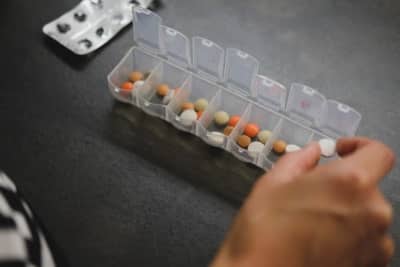Medication-assisted treatment or MAT combines behavioral therapy and medications for substance abuse treatment. Tom Price, Secretary of Health and Human Services sparked a conversation on the effectiveness of medication-assisted treatment in the opioid epidemic- “if we’re just substituting one opioid for another, we’re not moving the dial much.”
The need of the hour is evidence-based treatment protocols. The argument is if one treatment is working for one person may not necessarily work for another. But how much research has been conducted on the effectiveness of the medication-assisted treatment? What do we know? Here’s your guide to understanding everything about MAT.
What is MAT?
If you understand how heroin or any other drug alters your brain is crucial to understand the impact of medication-assisted treatment or medication-assisted therapy.
Opioids are generally prescribed by doctors to treat severe pain in cases of—chronic headaches, backaches, recovering from surgery, cancer pain, or sports injury.
Opioids cross the blood-brain barrier and attach itself to nerve cells in the brain, gut, spinal cord and other parts of the body. Opioids block pain messages from the body to the brain. In this process, it triggers a sudden surge of neurotransmitters and produces the feeling of high.
Opioid misuse has increased since 2000. Roughly, 586,000 Americans are going through substance use disorder and 1.9 million had a prescription pain reliever in 2014. In the same year, 28,000 people lost lives due to opioid overdose.
There is evidence-based treatment available for opioids which include medication-assisted treatment: it combines the use of approved medications, counseling, behavioral therapies, and patient monitoring.
Medications approved for MAT include buprenorphine, methadone, buprenorphine, naloxone, and naltrexone.
MAT works in two ways. Doctors can prescribe opiates that release the same receptors but are absorbed for a longer period. This breaks the psychological link between the drug and feeling high. On the other hand, doctors can prescribe opioid antagonists. A non-opioid drug that blocks the same receptors—eventually during a relapse, he or she won’t feel high.
Does it work?
MATs have proved effective in helping patients recover from drug addiction when prescribed and monitored. It’s safe and cost-effective and proven to reduce the chances of overdose. A study in Baltimore between 1995 and 2009 on heroin-overdose deaths reveals that the increasing availability of buprenorphine and methadone witness a 50% decrease in fatal overdoses.
Additionally, medication therapy improved patients’ retention, social functioning, and reduce the chances of infectious-disease transmission. However, MATs have been adopted in sparingly private-sector treatment programs and out of this only 34.4% of patients receive them.
What are the challenges in MAT adoption?
Several barriers contribute to low adoption of MATs that includes-
- Lack of trained prescribers, awareness and misunderstandings and negative attitudes about addiction medication available. For more than a decade, a common concern has been that treatment replaces one addiction with another. The paucity of systematic prescription results in inadequate doses and monitoring the effects results in a lack of evidence on MATs effectiveness.
- Regulatory policies are another concern. American Society of Addiction Medicine report underlines several policy-related obstacles that demand closer analysis. Some of the barriers include—utilization-management techniques such as limitations on dosage prescription, lifetime or annual medication limits, authorization and reauthorization, and lack of or minimal counseling. Though these policies are intended to ensure the adoption of MAT however they hinder access to appropriate care. For example- MAT has worked to prevent relapse and death but they are prevented by lifetime limits.
- Medicaid covers methadone and buprenorphine in every state, however, some Medicaid programs or MCO works in the favor of utilization-management policies. Most private insurance also covers opioid-addiction medications such as buprenorphine, but they are limited to similar policies and care is limited to an in-network provider. Few insurance carriers cover depot injection of naltrexone, while some do not cover methadone in their opioid treatment programs.
- One big gap is how to pick the right drug or dose for an individual patient. As the American Society of Addiction Medication states, “there is some evidence supporting the relative efficacy of one medication over another, but in many cases, no good-quality studies are comparing the relative benefits of one medication over another.”
- Each drug carries multiple risks and benefits. A methadone overdose can kill a person, whereas with buprenorphine or naltrexone they can’t. Naltrexone and buprenorphine can be taken orally or through injection. During surgery, it’s easy and quick to take people off from buprenorphine than methadone. However, the prescription is based on the doctor’s counseling with the patient.
What is the plan of action?
The Centers for Disease Control and Prevention is working on strategies to prevent prescription drug overdoses. The strategies are primarily focused on overdose epidemic through effective policies, enhanced surveillance, and clinical practices that follow statewide prescribing norms. These efforts can be supported by using data to take actionable steps in identifying and intervene in cases that neglect norms.
Centers for Medicare and Medicaid Services is working to improve MATs access through Medicaid programs through the application of the Mental Health Parity and Addiction Equity Act. All these initiatives will be a success if the medical community take active participation and engage in decision-making programs.
The prescription-drug overdose epidemic is complex. Expanding accessibility to MATs is important to help patients recover. Also, it’s time to adopt primary prevention policies that restricts the inappropriate prescribing of opioid.
The action plan for providers will be to eliminate or reduce excessive or unnecessary prescription of opioids. Routinely monitor data from prescription-drug programs to help identify patients who may be misusing or overdosing opioids and understand the impact of effective MATs implementation.






